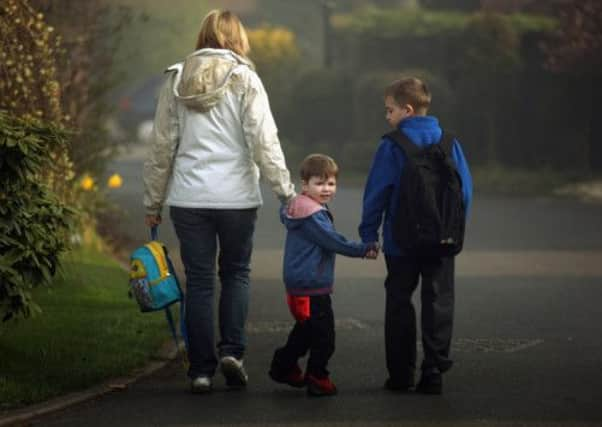Kids not walking to school due to speed limit fears


A poll published to coincide with the start of Walk to School Week showed 36 per cent of parents questioned said they would prevent their kids from walking to school for fear of vehicle speeds.
The research by Living Streets, which campaigns for pedestrians, also found nearly one in four of the 1,000 parents questioned automatically drove their children without even considering walking.
Advertisement
Hide AdAdvertisement
Hide AdThe latest available figures show 51 per cent of schoolchildren in Scotland walked to school in 2011, the highest for four years. However, this was lower than the peak over the past decade, of 56 per cent in 2002.
The poll comes two weeks after road safety charity Brake found more than three in four teachers felt compelled to campaign to make roads around their schools safer for pupils.
Living Streets said for parents, high traffic volumes and poor pavements and paths also dissuaded them from letting their children walk to school.
Chief executive Tony Armstrong said: “The overwhelming majority of our grans and granddads walked to school, but over generations we are seeing a steady decline to the point where it seems a fifth of parents wouldn’t even think about ensuring their child walks to school.
“Meanwhile, obesity rates have more than doubled, even since I walked to school just 20-odd years ago. Encouraging the walk to school not only helps to keep children healthy today, but makes for healthier adults in the future.
“We know time-pressed parents often see jumping into the car as the easiest way to get children to school on time, but we do so at the risk of storing up health problems for them in the future.
“Where government has supported schools and parents with the walk to school, we’ve seen walking rates increase by up to 33 per cent, but this is woefully short of what’s needed.”
The earlier Brake research found only one in eight schools had 20mph limits and it called for the limit to be the norm around schools. The charity said 12 children a day were injured walking or cycling to school – including two killed or seriously hurt. Scottish Government figures show the highest walking rates in 2011 were in “small remote towns”, at 68 per cent. Walking is also at its highest among the youngest pupils, with 60 per cent of five-year-olds going to classes on foot, which tails off to 56 per cent for all primary pupils and 46 per cent for all those at secondary schools.
Advertisement
Hide AdAdvertisement
Hide AdA spokeswoman for Glasgow City Council said: “Primary school across the city are working with road safety officers to make their routes to school safer and healthier by developing their own school travel and road safety plan and encouraging parents to use alternative forms of transport where possible.”
A spokesman for the Scottish Government’s Transport Scotland agency said: “We are determined to improve Scotland’s standing on child road safety and we are working with partners through a range of measures including education and engineering to make this happen.”
200,000 more people walk to work
THE number of people who walk to work has increased by more than 200,000 in the last decade, figures suggest.
Census figures show an additional 9 per cent of people now pound the pavements to get to work – taking the total to nearly 2,847,000, the Chartered Society of Physiotherapy (CSP) said.
But the union, which represents more than 50,000 physiotherapists, said more needs to be done to encourage others to walk to work.
“Walking is free and good for your health, so it’s understandable that more people are doing it to get to work,” said Dr Helena Johnson, chairwoman of the CSP.
“Clearly some people need to use alternative modes of transport, but even then there are easy ways to build exercise into that journey – park further away from the office or get
off the bus a stop early, for instance.
“Councils must do their part by promoting safe and enjoyable walking routes and removing some of the barriers that prevent people from getting exercise. Britain is facing an obesity crisis that is fuelled by inactivity.
“It is that people find time to exercise and hopefully these statistics are a sign that the message is getting through.”